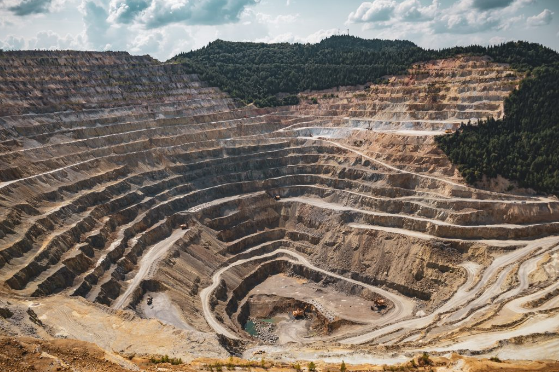Fire safety is a critical concern across industries, but not all environments face the same risks. While standard sprinklers and alarms work well in offices and homes, high-risk facilities require specialized solutions. Special hazard fire protection systems are engineered to address unique fire risks where conventional methods fall short—whether due to sensitive equipment, hazardous materials, or the need for rapid suppression. From data centers storing invaluable digital assets to chemical plants handling flammable substances, these systems provide **targeted, efficient, and damage-controlled fire suppression.
This article explores.
✔ *What special hazard fire protection systems are
✔ *Key types and how they work
✔ *Industries that rely on them
✔ *Benefits and implementation best practices
✔ *Future trends in fire suppression technology
What Are Special Hazard Fire Protection Systems?
Special hazard fire protection systems are advanced fire suppression solutions designed for environments where traditional water-based systems are ineffective or dangerous. These systems use specialized agents—such as clean gases, foam, CO₂, or dry chemicals—to suppress fires without damaging sensitive assets.
Why Are They Necessary?
– Water can cause more harm than fire in facilities like server rooms, museums, or laboratories.
– Fast suppression is critical in high-risk areas like aircraft hangars or oil refineries.
– Unique fire risks (e.g., lithium-ion battery fires, chemical reactions) demand tailored solutions.
How They Differ from Conventional Systems
| Feature | Traditional Fire Protection | Special Hazard Systems |
| Suppression Agent | Water | Clean agents, foam, CO₂, dry chemicals |
| Response Time | Slower (heat-activated) | Ultra-fast (detection-triggered) |
| Residue | High (water damage) | Minimal or none |
| Best For | Offices, homes | Data centers, labs, industrial plants |
5 Major Types of Special Hazard Fire Suppression Systems
1. Clean Agent Fire Suppression Systems
– Agents Used: FM-200, NOVEC 1230, Inergen
– How It Works: Disrupts the fire’s chemical reaction without residue.
– Best For: Data centers, telecom facilities, archives, control rooms
– Advantages: Safe for electronics, non-toxic, leaves no cleanup
2. CO₂ (Carbon Dioxide) Fire Suppression
– How It Works: Rapidly displaces oxygen, starving the fire.
– Best For: Electrical substations, industrial machinery, paint booths
– Considerations: Requires evacuation (asphyxiation risk)
3. Foam-Based Fire Suppression
– How It Works: Blankets flammable liquids, preventing reignition.
– Best For: Oil refineries, aviation hangars, fuel storage
– Advantages: Effective on Class B (flammable liquid) fires
4. Dry Chemical Fire Suppression
– Agents Used: Monoammonium phosphate, sodium bicarbonate
– Best For: Industrial kitchens, chemical plants, gas stations
– Advantages: Fast-acting, suppresses grease and chemical fires
5. Water Mist Fire Protection Systems
– How It Works: Fine water droplets cool flames without soaking equipment.
– Best For: Hospitals, marine environments, heritage buildings
– Advantages: Uses less water than sprinklers, safe for sensitive areas
Key Industries That Rely on Special Hazard Fire Protection
1. Data Centers & Telecommunications
– Risk: Electrical fires, server damage from water
– Solution: Clean agent systems (NOVEC 1230)
2. Healthcare & Laboratories
– Risk: MRI machines, chemical storage, oxygen-enriched environments
– Solution: Water mist or clean agent systems
3. Oil, Gas & Chemical Plants
– Risk: Flammable liquid fires, explosions
– Solution: Foam suppression or CO₂ systems
4. Aviation & Aerospace
– Risk: Jet fuel fires, hangar protection
– Solution: Foam and high-expansion suppression
5. Power Generation & Electrical Facilities
– Risk: Transformer fires, arc flash hazards
– Solution: CO₂ or dry chemical systems
> Case Study: A financial firm avoided $20M in downtime losses by using a clean agent system in its server room instead of water sprinklers.
Benefits of Special Hazard Fire Protection Systems
✅ Prevents Secondary Damage – No water or chemical residue means faster recovery.
✅ Faster Fire Suppression – Some systems extinguish flames in under 10 seconds.
✅ Compliance with Safety Standards – Meets NFPA, OSHA, and FM Global requirements.
✅ Lower Insurance Costs – Reduced risk can lead to premium discounts.
✅ Business Continuity – Minimizes operational disruption after a fire.
Challenges & Implementation Best Practices
Common Challenges
– High Initial Cost – Specialized systems require investment but save long-term losses.
– Maintenance Complexity – Requires certified technicians for inspections.
– Occupant Safety – CO₂ systems need **evacuation protocols**.
Best Practices for Installation
1. Conduct a Fire Risk Assessment – Identify hazards before selecting a system.
2. Choose the Right Agent– Match suppression chemistry to the fire risk.
3. Integrate with Building Automation – Ensure real-time monitoring.
4. Train Employees – Staff should know evacuation and emergency procedures.
5. Schedule Regular Maintenance – Inspect every 6-12 months for reliability.
Future Trends in Special Hazard Fire Protection
– AI & Smart Detection – Early fire prediction using IoT sensors.
– Eco-Friendly Agents – Moving away from greenhouse gas-based suppressants.
– Hybrid Systems – Combining water mist with clean agents for better efficiency.
Conclusion: Is Your Facility at Risk?
Standard fire protection isn’t enough for high-risk industries. Special hazard fire suppression systems provide precision, speed, and asset protection where traditional methods fail.
Key Takeaways:
✔ Special hazard systems use advanced agents (clean gas, foam, CO₂, etc.).
✔ They protect high-value industries (data centers, oil & gas, healthcare).
✔ Benefits include faster suppression, no water damage, and compliance.
✔ Proper design and maintenance are critical for effectiveness.
Don’t wait for a fire to expose vulnerabilities. Consult a Special hazard fire protection systems specialist to assess your facility’s needs today.
